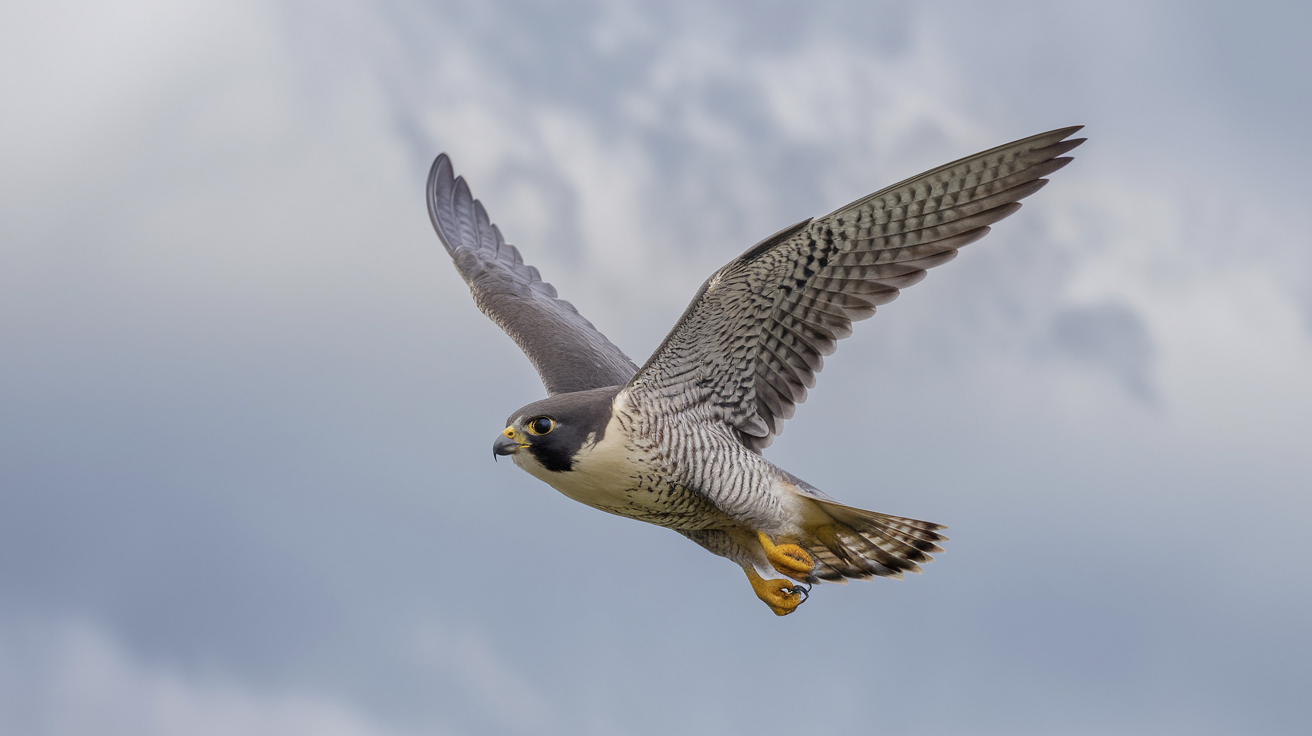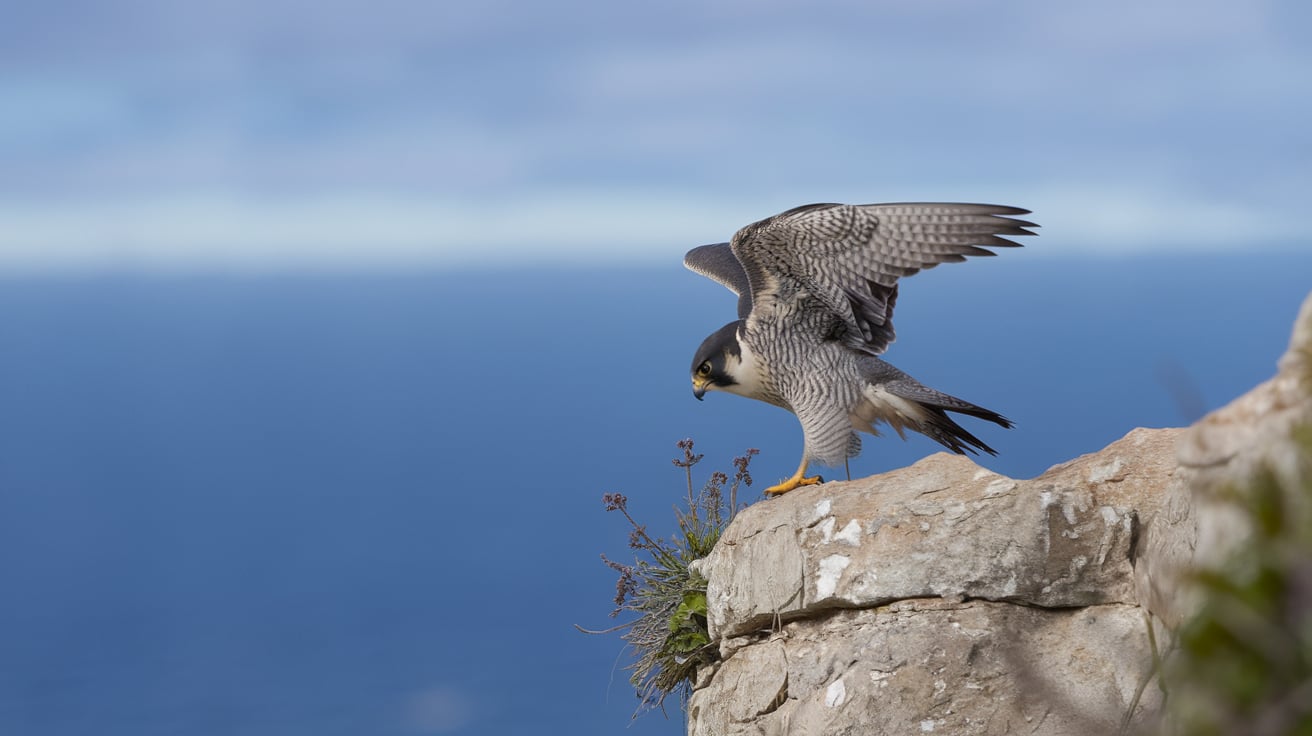
Peregrine Falcons are skilled hunters, primarily preying on medium-sized birds such as pigeons, ducks, and songbirds. They rely on their exceptional vision and speed to catch their prey mid-flight. The Peregrine’s hunting technique is known as a “stoop,” where they dive at high speeds to strike their prey with their talons. While once endangered due to pesticide poisoning, Peregrine Falcons have made a significant recovery and are now widespread thanks to conservation efforts.
The Peregrine Falcon (*Falco peregrinus*) is a bird of prey known for its incredible speed, particularly during hunting dives, or "stoops." In fact, it holds the title of the fastest bird in the world, capable of reaching speeds over 240 mph (386 km/h) while diving. Found worldwide, they thrive in a variety of habitats, from coastal cliffs to urban skyscrapers.
Their sharp vision is among the best in the animal kingdom, allowing them to spot prey from over a mile away. Highly adaptable, they often nest on tall structures in cities, where they help control populations of pigeons and other urban birds.

The Peregrine Falcon is known for its adaptability to various environments, including cities, where they nest on tall buildings and bridges. They use these high vantage points to spot prey from afar. While still rare in some areas, their population has been recovering since the 1970s after the ban of harmful pesticides like DDT. These birds are now considered a conservation success story, though they still face threats such as habitat loss and climate change.
